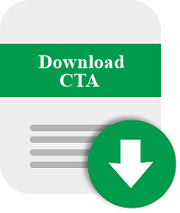Implementing a Central Bank Issued Digital Currency with Economic Implications Considerations
Abstract
A central bank-issued digital currency (CBDC) could solve the volatility of a privately-issued cryptocurrency as well as keep intact its potential benefits. This research intended to analyze the possibilities for implementing a CBDC in a viable format that is also Shariah-compliant which may have the capacity to tackle issues plaguing the current financial system. We discuss possible scenarios and the resulting impact and consequences of CBDC implementation, through a deep examination of the benefits, opportunities, costs and issues of several conceptual formats. Methodologically, we used qualitative, comparative and analytical assessments on the critical impact on crucial levers like dilution to monetary policy, and the stability of the financial system. Finally, we found that the best format was a non-interest bearing CBDC for the interbank settlement and wholesale payment systems which would have the least disruption to the economy but strongest monetary policy transmission.
Keywords
Full Text:
PDFReferences
Agarwal, R., & Kimball, M. (2015). Breaking through the zero lower-bound, IMF Working Paper, WP/15/224.
Bank for International Settlements (2019). Proceeding with caution – A survey on central bank digital currency, Monetary and Economic Department, January 2019.
Bank for International Settlements (2018). Central bank digital currencies, Committee on Payments and Market Infrastructures, March 2018.
Bank for International Settlements (2015). Digital currencies, Committee on Payments and Market Infrastructures, November 2015.
Barrdear, J., & Kumhof, M. (2016). The macroeconomics of central bank issued digital currencies. Staff Working Paper No. 605, Bank of England.
Bogle, J. (2012). Clash of cultures: investment vs. speculation. John Wiley & Sons, Hoboken, New Jersey.
Cerqueira, G., Dos Santos, E., de Lis, S., Neut, A., & Sebastián, J. (2017). Central bank digital currencies: Assessing implementation possibilities and impacts. BBVA Research, March 2017.
Christiano, L., Trabandt, M., & Walentin, K. (2010). DSGE models for monetary policy analysis. NBER Working Paper No. 16074, June 2010.
Danezis, G., & Meiklejohn, S. (2015). Centrally banked cryptocurrencies. University College London.
Dyson, B., & Hodgson, G. (2016). Digital cash: Why central banks should start issuing electronic money, Positive Money.
Fung, B., & Halaburda, H. (2016). Central bank digital currencies: A framework for assessing why and how. Bank of Canada Staff Discussion Paper No. 2016-22.
IMF (2019). Fintech: The experience so far. IMF-WBG Policy Paper, June 2019.
IMF (2017). Fintech and financial services: Initial Considerations, IMF Staff Discussion Note, SDN 17/05.
Koning, J. P. (2016). Fedcoin: A central bank-issued cryptocurrency. November 15, 2016.
Kotlikoff, L. (2010). Jimmy Stewart is dead: Ending the world's ongoing financial plague with limited purpose banking. John Wiley & Sons, Hoboken, NJ.
Laina, P. (2015). Proposals for full-reserve banking: A historical survey from David Ricardo to Martin Wolf. University of Helsinki.
Mersch, Y. (2017). Digital base money: An assessment from the ECB’s perspective. Speech at the farewell ceremony for Pentti Hakkarainen, Deputy Governor of Suomen Pankki – Finlands Bank. Helsinki, 16 January 2017.
Mirakhor, A. (2017). Islamic finance and financial repression. https://journal.wahedinvest.com/islamic-finance-and-financial-repression/ Accessed 5th July 2019.
Pfister, C. (2017). Monetary policy and digital currencies: Much ado about nothing? Bank of France, Working Papers, no 642.
Raskin, M., & Yermack, D. (2016). Digital currencies, decentralized ledgers, and the future of central banking, NBER Working Paper No 22238, May 2016.
Rogoff, K. (2016). The curse of cash, Princeton University Press.
Stevens, A. (2017). Digital currencies: Threats and opportunities for monetary policy, National Bank of Belgium, Economic Review, June.
Sveriges Riksbank (2017). The Riksbank’s e-krona project – Report 1, September.
DOI: https://doi.org/10.18196/ijief.2121
Refbacks
- There are currently no refbacks.
Copyright (c) 2020 International Journal of Islamic Economics and Finance (IJIEF)

This work is licensed under a Creative Commons Attribution-ShareAlike 4.0 International License.
International Journal of Islamic Economics and Finance (IJIEF)
International Program for Islamic Economics and Finance
Department of Economics
Faculty of Economics and Business
Universitas Muhammadiyah Yogyakarta
Pascasarjana Building, Ground Floor
Jl. Brawijaya (Ringroad Selatan), Kasihan, Bantul
D.I. Yogyakarta 55183, INDONESIA
Official email: ijief@umy.ac.id













1.jpg)